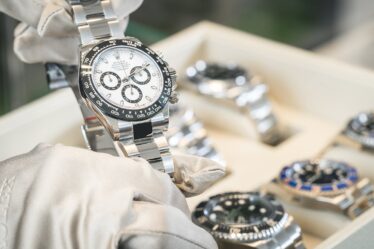
Leather has long been prized for its durability, versatility, and timeless appeal. As consumers seek high-quality leather products, understanding how to identify premium leather becomes essential. The quality of leather is determined by factors such as the type of hide, tanning process, and finishing techniques used in its production.
Leather quality varies widely, from full-grain to genuine leather, each with distinct characteristics and uses. Full-grain leather considered the highest grade, retains the natural grain of the animal hide and develops a rich patina over time. Top-grain leather, while slightly less durable, offers a more uniform appearance and is often used in luxurious leather goods.
The leather industry plays a significant role in global economies, providing employment for millions worldwide. As demand for quality leather continues to grow, consumers can now easily buy leather online at Gazana Leather shop and other reputable retailers. By learning to distinguish between different grades and types of leather, buyers can make informed decisions and invest in products that will stand the test of time.
Key Takeaways
- Leather quality is determined by the hide type, tanning process, and finishing techniques
- Full-grain and top-grain leathers are considered the highest-quality options
- Consumers can make informed purchases by understanding leather grades and characteristics
Understanding Leather Qualities and Grades
Leather quality varies significantly based on the type, grade, and processing methods used. Different leather grades offer distinct characteristics that affect durability, appearance, and cost.
The Different Types of Leather
Full-grain leather is the highest quality, retaining the natural grain and imperfections of the hide. It develops a beautiful patina over time and offers superior durability.
Top-grain leather is slightly lower in quality. The surface is sanded and refined to remove imperfections, resulting in a more uniform appearance. It’s thinner and more pliable than full-grain leather.
Genuine leather is a lower-quality type made from the hide’s remaining layers after top layers are removed. It undergoes heavy processing and often has an artificial grain applied.
Split leather comes from the lower layers of the hide. It’s less durable and often used for suede.
Bonded leather is the lowest quality, made from leather scraps mixed with synthetic materials.
Hierarchy of Leather Grades
- Full-grain leather
- Top-grain leather
- Corrected-grain leather
- Split-grain leather
- Genuine leather
- Bonded leather
This hierarchy reflects the quality, durability, and typically, the cost of each leather grade. Higher grades generally offer better longevity and develop more character over time.
Identifying Characteristics of High-Quality Leather
High-quality leather exhibits several key characteristics:
- Natural grain patterns
- Subtle imperfections
- Rich, deep color
- Soft, supple texture
- Distinctive leather smell
To identify quality leather, examine the surface closely. High-quality hides will have visible pores and may show slight variations in color or texture.
Perform a water drop test: place a small drop of water on the surface. Quality leather will absorb it slowly, while lower grades or synthetic materials will repel it.
Check the edge of the leather. High-quality pieces often have visible layers, while lower grades may appear uniform or have a plastic-like edge.
Analyzing Leather Sources and Tanning Methods
The quality of leather products depends heavily on the animal source and tanning process used. Different hides and tanning methods produce varying leather characteristics, affecting durability, texture, and appearance.
Various Leather Sources
Leather comes from diverse animal hides, each with unique properties. Cowhide is the most common, known for its durability and versatility. Calfskin offers a softer, more luxurious feel, often used in high-end goods. Sheepskin provides a soft, pliable leather that is ideal for clothing and accessories.
Goatskin creates strong yet lightweight leather that is popular in gloves and small goods. Pigskin yields a distinctive grain pattern and is often used in shoes and wallets. Exotic leathers like alligator or ostrich offer unique textures but come at a premium price.
The choice of hide impacts the final product’s characteristics, including strength, texture, and appearance.
Tanning Process Explained
Tanning transforms raw hides into durable leather through chemical processes. The two primary methods are vegetable tanning and chrome tanning.
Vegetable tanning uses natural tannins from tree bark and plants. This method produces a firm, warm-toned leather that develops a rich patina over time. It’s eco-friendly but time-consuming, often taking weeks to complete.
Chrome tanning employs chromium salts for a faster process, typically lasting one day. It results in softer, more pliable leather with increased water resistance. This method allows for a wider range of colors but has environmental concerns.
The tanning process also influences leather types:
- Aniline leather: Fully dyed, showing natural markings
- Semi-aniline leather: Lightly pigmented for more uniform color
- Nubuck and suede: Sanded or buffed for a velvety texture
Each tanning method imparts distinct qualities, affecting the leather’s durability, feel, and appearance.
Wrapping Up
Identifying high-quality leather requires attention to several key factors. The look, feel, smell, and durability of leather all provide important clues about its quality.
High-grade leather should have a smooth, uniform appearance with minimal imperfections. It will feel supple yet sturdy, with a natural scent that indicates authenticity.
By examining these characteristics carefully, consumers can make informed decisions when purchasing leather goods, ensuring they invest in products that offer both style and longevity.
More to Love!
Upholstery Brands with the Best High-End Designer Fabric & Leather Choices
Shopping for Laptop Bags? The Finest Leather Is a Must



